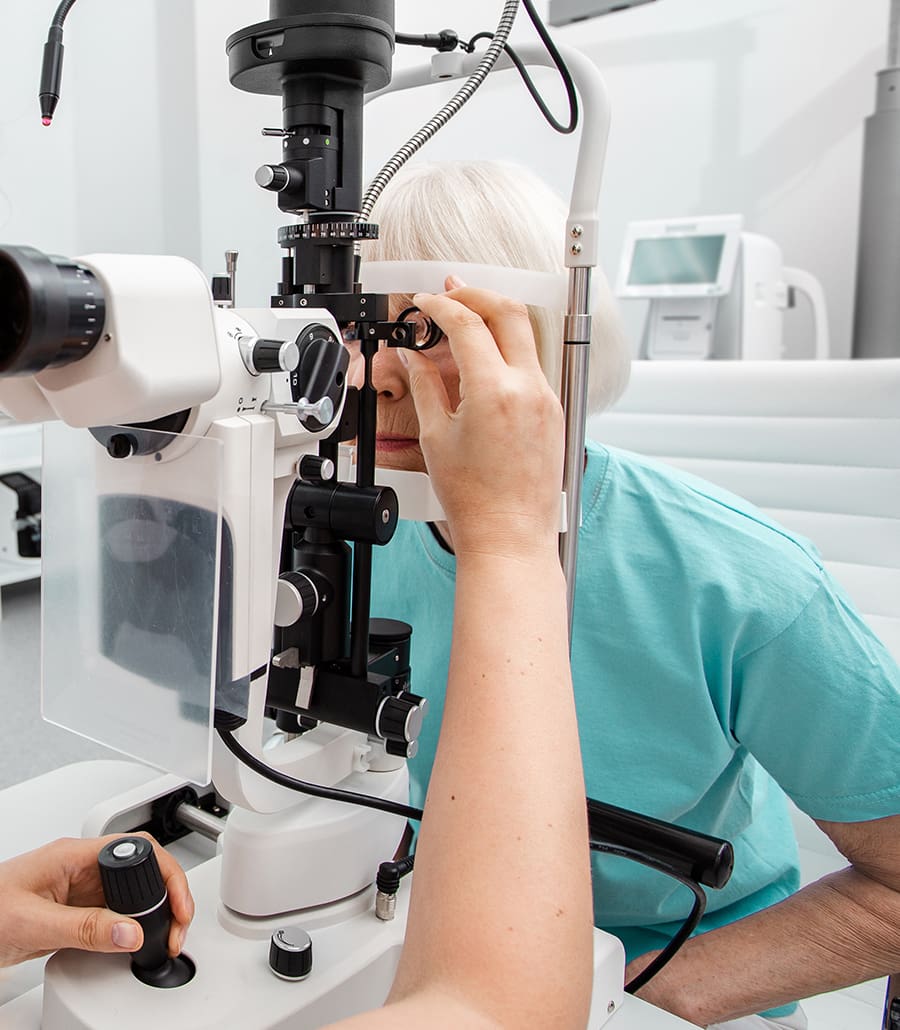
By AkersArt
Ask the Expert: Glaucoma

William Plum, MD
Cataract & Glaucoma Specialist at Mid Florida Eye Center
What is glaucoma?
Glaucoma is a disease that damages your optic nerve and causes vision loss. The optic nerve is responsible for transmitting visual information from your eyes to your brain. Glaucoma usually occurs when there is increased pressure within the eye, known as intraocular pressure. This pressure buildup is related to damage over time, leading to gradual loss of peripheral (side) vision initially, and if left untreated, it can progress to complete blindness.
In common cases of glaucoma, the drainage system doesn’t work properly, causing the fluid to accumulate and raise the pressure inside the eye. The exact reasons why the drainage system fails can vary and may include factors like genetics, age, or certain medical conditions.
How is glaucoma diagnosed?
This silent disease is diagnosed through a series of eye examinations and testing. It’s important to detect glaucoma early to prevent vision loss or slow down its progression. The main steps involved in diagnosing glaucoma are as follows:
- Eye Pressure Measurement: The first step is to check thepressure inside the eye using a simple and painless test called tonometry. This helps identify if the eye pressure is higher than normal, which is a common sign of glaucoma.
- Visual Field Test: A visual field test, also known as perimetry, is conducted to evaluate your peripheral vision.
- Optic Nerve Evaluation: The doctor will examine the optic nerve at the back of your eye to look for any signs of damage, such as thinning or cupping of the optic nerve, which can be indicative of glaucoma.
- Gonioscopy: This test involves using a special lens to examine the drainage angle of the eye to determine if it is open or closed, which helps classify the type of glaucoma.
- Imaging Tests: Imaging tests like Optical Coherence Tomography (OCT) are used to get detailed images of the optic nerve and the nerve fiber layer. These images provide valuable information about the health of the optic nerve and its surrounding structures.
How is glaucoma treated?
The mainstay of glaucoma therapy is currently focused on lowering intraocular pressure. This can be via eye drops, laser therapy, and in some cases oral medications. For more advanced cases of glaucoma, surgery is indicated. The choice of treatment depends on the type and severity of glaucoma, as well as other individual factors. The goal of treatment is to control eye pressure in order to slow down the progression of the disease. Early detection and consistent management are essential in managing glaucoma successfully. It’s essential to have regular eye exams, especially as you get older, to catch glaucoma early and take appropriate measures to protect your vision.








